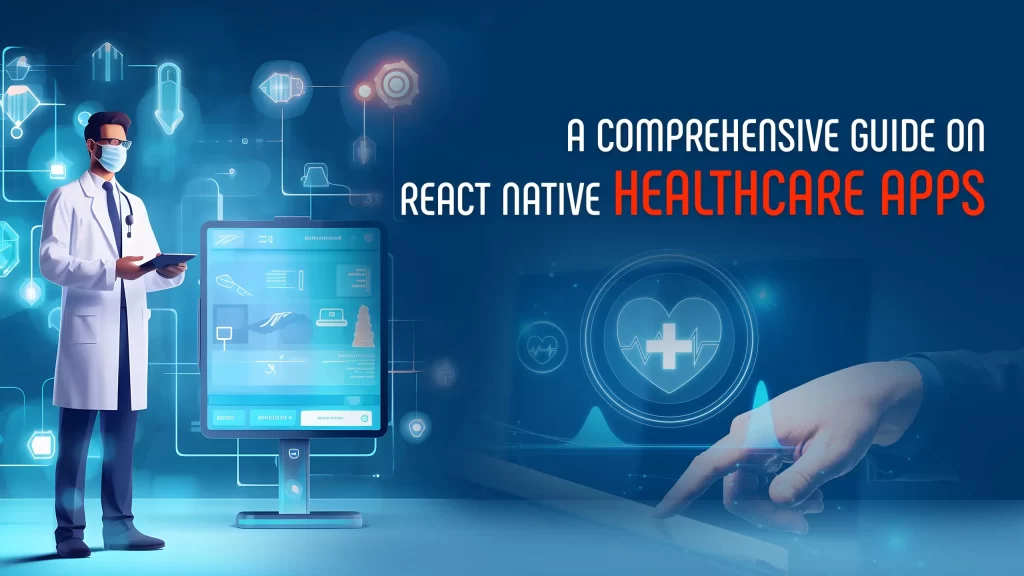
In the dynamic realm of mobile app development, React Native has emerged as a powerful and versatile framework, allowing developers to create cross-platform applications with efficiency and speed. One of the most significant areas where React Native is making a substantial impact is in healthcare app development. This comprehensive guide delves into the world of React Native healthcare apps, exploring their benefits, features, and the development process.
Understanding React Native
React Native is an open-source framework developed by Facebook that enables the creation of native-style applications for iOS and Android platforms using JavaScript and React. Its ability to facilitate cross-platform development with a single codebase has made it a preferred choice for various industries, including healthcare.
Benefits of React Native Healthcare Apps
1. Cross-Platform Compatibility:
React Native allows developers to write code once and deploy it on both iOS and Android platforms. This not only saves time and resources but also ensures a consistent user experience across different devices.
2. Cost-Effectiveness:
Developing a healthcare app using React Native is cost-effective as it eliminates the need to maintain separate codebases for iOS and Android. This results in reduced development and maintenance costs.
3. Fast Development Cycle:
React Native’s hot-reloading feature enables developers to see the results of their code changes instantly, speeding up the development process. This rapid iteration cycle is crucial for healthcare apps where quick updates and bug fixes are essential.
4. Native-Like Performance:
React Native combines the benefits of web development with the performance of native apps. The framework uses native components, resulting in applications that perform almost as well as those developed using native languages.
5. Wide Developer Community:
The large and active React Native community ensures continuous support, updates, and a vast array of third-party libraries, making it easier for healthcare app developers to find solutions to challenges they may encounter during the development process.
Key Features of React Native Healthcare Apps
1. User Authentication and Authorization:
Security is paramount in healthcare apps. React Native enables the implementation of robust authentication and authorization processes to ensure that only authorized users have access to sensitive medical information.
2. Real-time Updates and Notifications:
Healthcare apps often require real-time updates and notifications for appointments, medication reminders, and test results. React Native’s capabilities make it seamless to integrate real-time features, enhancing the overall user experience.
3. Integration with Wearable Devices:
With the growing popularity of wearable devices, React Native allows healthcare apps to integrate seamlessly with wearables, collecting and presenting health data in real-time.
4. Telemedicine Capabilities:
React Native supports the integration of video conferencing and telemedicine features, enabling healthcare providers to offer remote consultations and services.
5. Data Encryption and Privacy:
Ensuring the security and privacy of patient data is non-negotiable in healthcare apps. React Native facilitates the implementation of robust data encryption and privacy measures to comply with healthcare regulations and standards.
Development Process of React Native Healthcare Apps
1. Requirement Analysis:
Clearly define the goals and functionalities of the healthcare app. Identify the target audience, features, and any specific regulatory requirements that need to be addressed.
2. Design and Prototyping:
Create a user-friendly and intuitive design for the app. Develop prototypes to visualize the user interface and gather feedback from stakeholders.
3. Backend Development:
Build a secure and scalable backend infrastructure to handle data storage, retrieval, and communication with the frontend.
4. Frontend Development with React Native:
Leverage the power of React Native to develop the frontend of the healthcare app. Implement features such as user authentication, real-time updates, and integration with wearable devices.
5. Testing:
Rigorous testing is essential to identify and fix bugs, ensure data security, and validate the app’s performance. Conduct both manual and automated testing to guarantee a seamless user experience.
6. Deployment:
Deploy the React Native healthcare app on the App Store and Google Play Store. Ensure compliance with platform-specific guidelines and regulations.
7. Maintenance and Updates:
Regularly update the app to introduce new features, address security concerns, and improve overall performance. Monitor user feedback and address any issues promptly.
Future Trends in React Native Healthcare Apps
The landscape of healthcare app development is continually evolving. As technology advances, React Native healthcare apps are likely to witness the integration of emerging technologies such as artificial intelligence, machine learning, and blockchain. These innovations hold the potential to enhance diagnostic accuracy, personalized treatment plans, and the overall efficiency of healthcare services.
Conclusion
React Native is proving to be a game-changer in the development of healthcare apps, offering a cost-effective and efficient solution for creating cross-platform applications. With its robust features and a supportive community, React Native is well-positioned to drive innovation in the healthcare industry, improving patient care, and making healthcare services more accessible and user-friendly. As the demand for mobile healthcare solutions continues to rise, the adoption of React Native is set to play a pivotal role in shaping the future of healthcare app development.
